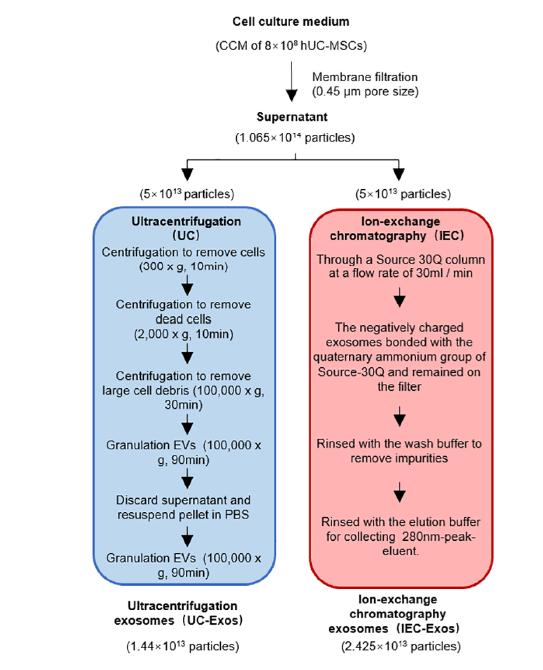Large-scale separation and purification of exosomes using ionexchange chromatography
DOI:
https://doi.org/10.15419/bmrat.v11i4.881Keywords:
Purification process, liquid chromatography, exosomesAbstract
Introduction: With the growing interest in exosomes for research and therapeutic applications, there's a critical need for effective enrichment strategies that can isolate exosomes in large quantities without contaminants. Despite various methods being developed, none have satisfactorily achieved this goal without contamination issues. This study introduces a novel approach for exosome separation - ion-exchange chromatography (IEC) - that leverages the negatively charged phospholipids on the exosomal surface for more effective isolation.
Methods: The study developed a novel exosome separation strategy using ion-exchange chromatography (IEC) and compared it with the traditional ultracentrifugation (UC) method. The comparison focused on yield, purity, and the biological effects of the exosomes enriched by both methods. The new IEC method was tested alongside classical separation techniques like ultrafiltration for its efficiency in large-scale exosome extraction.
Results: Both UC and IEC efficiently enriched exosomes with high abundance, but IEC was superior in terms of lower protein contamination and better particle dispersion. Furthermore, exosomes enriched with IEC exhibited a stronger clonogenic effect on murine lung epithelial cells compared to those enriched by UC. In wound healing assays, exosomes isolated by both IEC and UC significantly improved the healing ratio in lung epithelial cells, showcasing the potential therapeutic benefits of the exosomes isolated by these methods.
Conclusion: The novel ion-exchange chromatography (IEC) method developed for exosome separation demonstrated significant advantages in terms of yield, purity, and biological effects when compared to traditional ultracentrifugation. The lower protein contamination and better particle dispersion achieved with IEC, along with its superior clonogenic and healing effects on lung epithelial cells, suggest that IEC can play a crucial role in future exosome separation strategies, particularly for large-scale applications.

Published
Issue
Section
License
Copyright The Author(s) 2017. This article is published with open access by BioMedPress. This article is distributed under the terms of the Creative Commons Attribution License (CC-BY 4.0) which permits any use, distribution, and reproduction in any medium, provided the original author(s) and the source are credited.
